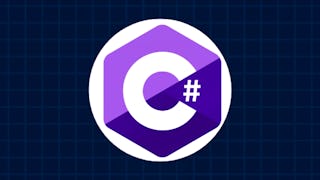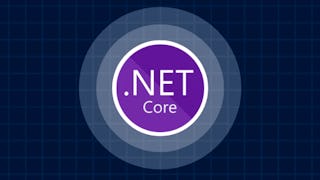In this course, you will learn how to develop modular monoliths using .NET 8, a modern approach to building scalable, maintainable, and flexible applications. By the end, you'll be proficient in creating modular monoliths that offer the benefits of both traditional monolithic architectures and microservices, avoiding the pitfalls of both. You'll explore key concepts like vertical slice architecture, dependency injection, domain-driven design (DDD), and clean architecture while gaining practical experience in building modular components.

Early bird sale! Unlock 10,000+ courses from Google, Microsoft, and more for £160/year. Save now.


Building Modular Monoliths with .NET 8
This course is part of .NET 8 Backend Bootcamp – Modulith, DDD & CQRS Specialization

Instructor: Packt - Course Instructors
Included with 
Recommended experience
What you'll learn
Understand the advantages of modular monoliths over microservices and traditional monoliths
Learn how to structure and organize a modular monolith project using .NET 8
Implement domain-driven design and CQRS for effective modular architecture
Explore best practices for dependency injection, clean architecture, and data management in modular monoliths
Skills you'll gain
Details to know

Add to your LinkedIn profile
May 2025
11 assignments
See how employees at top companies are mastering in-demand skills

Build your subject-matter expertise
- Learn new concepts from industry experts
- Gain a foundational understanding of a subject or tool
- Develop job-relevant skills with hands-on projects
- Earn a shareable career certificate

There are 11 modules in this course
In this module, we will introduce the key concepts of the bootcamp, setting the stage for the rest of the course. You’ll gain access to the necessary resources and learn how to run the final application. We’ll also discuss how to best approach the course, ensuring a smooth learning experience.
What's included
6 videos2 readings
In this module, we will explore traditional monolithic architectures and their inherent issues. You will learn about the "Big Ball of Mud" anti-pattern and technology lock-ins that hinder scalability and flexibility in monolithic systems.
What's included
4 videos1 assignment
In this module, we will dive into microservices architecture and discuss its benefits and limitations. You’ll explore why microservices might not always be the best choice for certain projects and learn from Amazon’s experience in re-architecting their system.
What's included
4 videos1 assignment
In this module, we will explore modular monolithic architecture, which serves as a bridge between monolithic and microservices architectures. You'll learn about the benefits of modularity, incremental migration strategies, and real-world examples like Shopify’s approach.
What's included
6 videos1 assignment
In this section, we will walk you through setting up the solution structure for the eShop modular monolith project. You will learn to organize modules, configure dependencies, and set up a clean architecture for a scalable application.
What's included
16 videos1 assignment
This module focuses on managing dependencies between modules using Dependency Injection. You’ll learn to configure DI in ASP.NET and handle the HTTP request pipeline to ensure modules communicate efficiently and independently
What's included
15 videos1 assignment
In this section, we will dive into the development of the catalog module using Vertical Slice Architecture and CQRS. You’ll learn how to structure the catalog module and explore domain modeling, API development, and the CQRS pattern for data handling
What's included
4 videos1 assignment
In this module, we will focus on developing the shared domain using tactical DDD patterns. You’ll learn how to create entities, aggregates, and domain events and leverage MediatR to handle domain events effectively.
What's included
6 videos1 assignment
This module will guide you through the creation of the product domain model for the catalog module. You will learn how to build rich domain models, implement domain events, and apply these patterns to effectively handle product-related business logic.
What's included
7 videos1 assignment
In this module, we will set up PostgreSQL as the main database for our modular monolith project. You’ll explore data isolation techniques, set up Docker containers for a cloud-native database, and configure PostgreSQL within a Dockerized development environment.
What's included
10 videos1 assignment
In this section, we will build the data infrastructure for the shared and catalog modules using EF Core’s Code-First approach. You’ll configure migrations, seed data, and leverage EF Core interceptors for auditing and event dispatching.
What's included
24 videos1 reading2 assignments
Earn a career certificate
Add this credential to your LinkedIn profile, resume, or CV. Share it on social media and in your performance review.
Instructor

Offered by
Explore more from Software Development
 Status: Free Trial
Status: Free TrialBoard Infinity
 Status: Free Trial
Status: Free TrialMicrosoft

Board Infinity
 Status: Free Trial
Status: Free TrialBoard Infinity
Why people choose Coursera for their career





Open new doors with Coursera Plus
Unlimited access to 10,000+ world-class courses, hands-on projects, and job-ready certificate programs - all included in your subscription
Advance your career with an online degree
Earn a degree from world-class universities - 100% online
Join over 3,400 global companies that choose Coursera for Business
Upskill your employees to excel in the digital economy
Frequently asked questions
Yes, you can preview the first video and view the syllabus before you enroll. You must purchase the course to access content not included in the preview.
If you decide to enroll in the course before the session start date, you will have access to all of the lecture videos and readings for the course. You’ll be able to submit assignments once the session starts.
Once you enroll and your session begins, you will have access to all videos and other resources, including reading items and the course discussion forum. You’ll be able to view and submit practice assessments, and complete required graded assignments to earn a grade and a Course Certificate.
More questions
Financial aid available,

